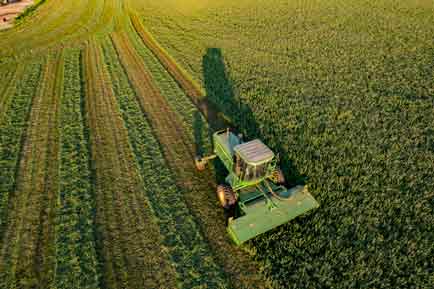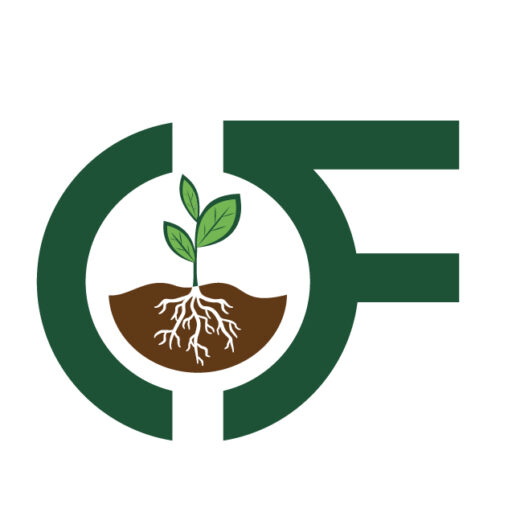The Farmer's Guide to Harvesting and Baling Hay Efficiently
Harvesting and baling hay efficiently is crucial for farmers to ensure a steady supply of high-quality forage for their livestock. Proper hay production not only provides nutrition for animals but also impacts farm economics and sustainability. We will delve into the essential steps and strategies that farmers can employ to harvest and bale hay efficiently, maximizing productivity and minimizing waste.

(Alfalfa Harvesting)
Step 1: Timing is Key
The first step in efficient hay production is to time the harvest right. The ideal time to cut hay largely depends on the type of hay and local climate conditions, but a few general guidelines can help:
- Stage of Maturity: Most hay is best harvested when plants are in the early- to mid-bloom stage. At this point, the forage contains the highest levels of nutrients and is more digestible. Cutting too early or too late can result in lower nutritional value.
- Weather Forecast: Keep a close eye on the weather forecast when baling hay. Aim to cut hay when you expect several days of dry, sunny weather. Rain shortly after cutting can delay drying and lead to mold and spoilage.
- Time of Day: Consider cutting hay in the late morning or early afternoon when dew has dried off, but before the heat of the day can cause wilting. This can help preserve the nutritional quality of the forage.
Step 2: Hay Baling Equipment Preparation
Efficiency in hay production hinges on the upkeep of your equipment. Prior to the harvest season, it’s crucial to undertake the following steps to optimize your operations. Firstly, conduct a thorough inspection and servicing of your mowers, rakes, tedders, and balers, ensuring all components are in optimal condition. Replace any worn-out parts to prevent potential breakdowns during critical periods. Additionally, calibrate your baler to guarantee consistent bale sizes, minimizing waste and facilitating easier stacking and handling. Furthermore, regularly check and sharpen mower blades to ensure efficient cutting, reducing mowing time and enhancing hay quality. By prioritizing equipment maintenance and calibration, you can streamline your hay production process, maximizing productivity and yields.
Step 3: Mowing and Conditioning
Mowing is a critical step in hay production, and the efficiency of this process affects the entire operation. Here’s what to consider:
- Mowing Height: Adjust your mower to the appropriate cutting height for the type of hay you’re harvesting. Cutting too low can damage the plants and reduce regrowth potential.
- Conditioning: In some cases, conditioning equipment can be used to crimp or crush the stems of the plants, which can speed up drying by increasing the surface area exposed to air. This can be particularly useful in areas with high humidity.
Step 4: Drying and Raking
After cutting, hay needs to dry before hay baling. Efficient drying is essential for preventing mold and preserving the nutritional quality of the forage:
- Tedding: A tedder is a piece of equipment that spreads and fluffs the cut hay to expose more of it to the sun and air. Tedding helps speed up the drying process and can improve overall hay quality.
- Raking: Once the hay has dried sufficiently, use a hay rake to gather it into windrows for baling. Properly formed windrows are essential for efficient baling and handling.
Step 5: Baling
Baling is the final step in the hay production process. Here are some key considerations for efficient baling:
- Bale Size: Choose an appropriate bale size based on your equipment and handling capabilities. Larger bales can reduce handling time but may require heavier equipment.
- Bale Density: Aim for consistent bale density to optimize storage and transportation. Balers with adjustable bale density settings can help achieve this.
- Bale Wrapping: If you’re producing hay for animal bedding or silage, consider bale wrapping to preserve moisture and quality. Wrapping can also reduce spoilage and waste. Use high quality hay baling wire to wrap hay bales effectively.
- Efficient Stacking: Stack bales efficiently to minimize space requirements and make handling and transportation more straightforward. Properly stacked bales are less prone to spoilage and damage.
- Baling Hay by Hand: Takes longer, requires a lot of energy, and higher risk of injury.
Step 6: Storage and Protection
Ensuring proper storage of baled hay is essential to preserve its quality and prevent spoilage. Implementing effective storage strategies can significantly impact the longevity and usability of hay bales. Firstly, prioritize dry storage by selecting a well-ventilated area that minimizes moisture exposure. Utilizing elevated storage or pallets can further prevent moisture absorption from the ground, safeguarding bale integrity. In cases where outdoor storage is unavoidable, employing tarps or covers is paramount to shield bales from rain and moisture infiltration. It’s crucial to securely fasten covers to prevent wind damage and ensure maximum protection. Additionally, maintaining good ventilation within storage areas is vital to mitigate the risk of mold and overheating. Properly spaced bales and well-ventilated spaces facilitate adequate air circulation, preserving hay quality over time. By adhering to these storage best practices, you can safeguard your hay supply and optimize its usability for feeding livestock.
Step 7: Regular Maintenance
Efficiency in hay production is a continuous endeavor that demands consistent maintenance and vigilance. To uphold productivity and quality standards, it’s essential to adhere to ongoing practices:
Equipment Maintenance: Consistently inspect and service your equipment to mitigate breakdowns and interruptions during the season. Regular maintenance minimizes downtime and optimizes operational efficiency.
Quality Control: Routinely monitor stored hay for indications of spoilage, mold, or pest infestations. Promptly remove any affected bales to prevent contamination and preserve overall hay quality.
Record Keeping: Maintain detailed records of your hay production activities, including cutting dates, bale quantities, and quality assessments. This comprehensive data serves as a valuable resource for informed decision-making in future harvests, allowing you to fine-tune strategies and optimize outcomes.
By prioritizing these ongoing measures, you can sustainably enhance hay production efficiency and maintain high-quality standards, driving long-term success in your operations.
Common Challenges in Hay Production
Efficient hay production poses various challenges that farmers must overcome to ensure optimal yields and quality. Weather unpredictability often leads to delays in cutting and drying, affecting the entire production process. Farmers can mitigate this by investing in weather monitoring technology and devising contingency plans for unexpected rain. Weed and pest infestations pose significant threats to hay quality, necessitating integrated pest management practices for effective control.
Limited storage space can be a hindrance, especially for those producing large quantities of hay. To address this, farmers may explore alternative storage options such as stacking bales in pyramids or utilizing off-site storage facilities. Additionally, the labor-intensive nature of harvesting and baling hay can pose time constraints. Mechanization of tasks or hiring additional labor during peak periods can help streamline operations and maximize efficiency.
By recognizing and addressing these challenges head-on, farmers can optimize their hay production processes and ensure consistent quality and yields.
Conclusion
Efficiency in harvesting and baling hay is a critical aspect of successful hay production. Proper timing, equipment preparation, mowing, drying, and baling techniques are essential for maximizing productivity and minimizing waste. Efficient storage and regular maintenance also play key roles in preserving hay quality. While challenges may arise, with careful planning and ongoing attention to detail, farmers can optimize their hay production processes and ensure a consistent supply of high-quality forage for their livestock.

